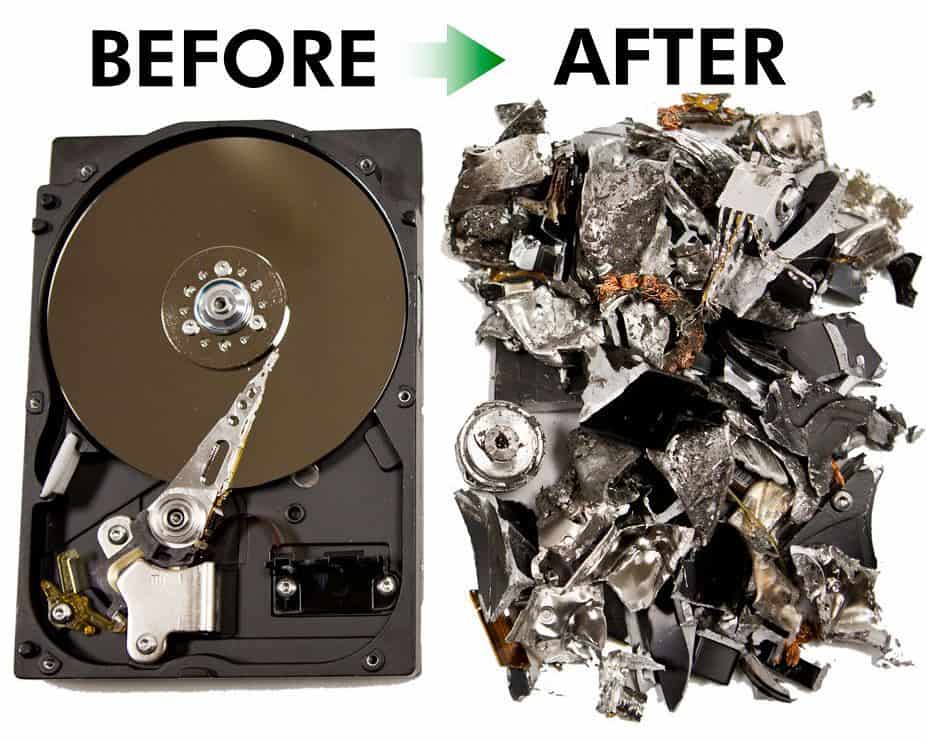Checking Out the Value of Data Destruction in the Context of Computer System Security Providers and Protecting Confidential Information
In an era where data violations are progressively common, the relevance of effective information damage can not be overemphasized. What methods can organizations carry out to improve their data damage methods?
Recognizing Data Destruction
Data devastation is a vital part of computer system safety that involves the irreversible removal of information from storage tools to stop unapproved gain access to and prospective data breaches. In a significantly digital landscape, companies deal with enhanced risks related to delicate information being poorly accessed or exploited. Reliable information damage safeguards against these dangers, making sure that personal dataâEUR" such as client details, copyright, and economic recordsâEUR" can not be recouped after disposal.
Comprehending the relevance of information destruction prolongs beyond simple compliance with governing and lawful frameworks; it is necessary for keeping organizational honesty and count on. When information is incorrectly managed or improperly destroyed, the repercussions can be serious, consisting of financial loss, reputational damages, and lawful liabilities.

Methods of Information Obliteration

One common method is data cleaning, which entails overwriting existing information with random patterns several times. This method renders the original data irretrievable, making it a preferred option for organizations seeking to secure secret information.
An additional method is degaussing, which utilizes an effective electromagnetic field to disrupt the magnetic domain names on storage devices, successfully getting rid of the data. This method is especially effective for magnetic media yet is not suitable to solid-state drives.
Physical damage is one more robust technique, squashing or entailing the shredding of storage space tools. This method guarantees that information healing is practically impossible, making it perfect for highly sensitive information.
Last but not least, security can work as a complementary approach to information elimination. By securing data prior to removal, companies can add an additional layer of protection, ensuring that also if residues are recouped, they continue to be hard to reach without the decryption secret. Each method ought to be chosen based on the level of information level of sensitivity and the specific security requirements of the organization.
Legal Conformity and Data Security
Organizations must navigate an intricate landscape of legal needs related to data safety and security, especially after implementing approaches of data elimination. Numerous policies, such as the General Information Protection Policy (GDPR) and the Medical Insurance Portability and Accountability Act (HIPAA), impose rigorous standards on how organizations need to get rid of and take care of of delicate information. Failure to abide by these guidelines can result in substantial lawful repercussions, including considerable penalties and reputational damage.
Information damage processes must be carefully recorded to show compliance with applicable regulations and standards. This documents not only functions as proof of adherence to lawful commitments but also highlights a commitment to guarding delicate info. Organizations should also establish clear policies concerning data retention and destruction timelines, making certain that data is not held longer than needed.

Additionally, routine audits and analyses of data destruction practices are necessary to maintain compliance and adjust to evolving legal structures (data destruction). By proactively dealing with lawful demands, companies can reduce risks connected with data breaches and show their commitment to information security. Inevitably, prioritizing lawful compliance in data damage processes is not simply a governing obligation, but a basic facet of a robust data safety and security strategy
Effect On Service Online Reputation
The reputation of an organization can be dramatically influenced by its technique to data devastation and management. In today's digital landscape, where data breaches can take place anytime, the failure to effectively get rid of sensitive info can lead to extreme repercussions. Organizations that improperly take care of information destruction risk revealing personal customer info, which not only violates privacy regulations however likewise deteriorates trust fund among stakeholders and customers.
A tarnished credibility can lead to reduced client loyalty, as customers end up being hesitant to engage with a company that has actually demonstrated negligence useful link in protecting their data. Additionally, adverse publicity bordering an information violation can have a long-term impact, as possible clients could be deterred by the perceived absence of safety and security. This can lead to a straight decrease in earnings and market share.
Additionally, businesses that prioritize information damage as part of their protection technique can enhance their online reputation by showcasing their dedication to securing delicate information. By embracing rigorous information monitoring practices, organizations resource can not only reduce risks but likewise position themselves as trustworthy entities in their respective sectors, therefore reinforcing their general brand image.

Finest Practices for Secure Disposal
Executing best techniques for safe disposal of data is crucial for alleviating risks associated with data violations and ensuring compliance with privacy regulations. Organizations must take on a detailed data disposal policy that outlines procedures for both physical and electronic data damage.
For physical information storage gadgets, such as disk drives, shredding or degaussing is recommended to stop information recovery. Furthermore, organizations must preserve a chain of custodianship paperwork during the disposal process, making certain liability and traceability of disposed things.
For electronic information, making use of software program that sticks to industry requirements for information wiping is essential. This software program should overwrite existing data numerous times, making healing essentially impossible. It is likewise important to validate the efficiency of the information destruction process with audits or third-party assessments.
Training workers on safe and secure disposal practices adds one more layer of security, as human error can typically bring about information exposure. Consistently evaluating and updating disposal policies guarantees positioning with advancing guidelines and technical developments. By implementing these finest methods, companies can significantly decrease the danger of unapproved information access and enhance their general information defense strategy.
Conclusion
In final thought, data devastation is a fundamental aspect of computer safety solutions that ensures the security of secret information from unapproved access. Applying reliable methods of information eradication, adhering to lawful compliance, and recognizing the effect on company online reputation are important parts of a comprehensive information safety and security approach. By adopting finest techniques for safe and secure more helpful hints disposal, companies can promote trust with customers and secure delicate information, eventually adding to an extra secure electronic landscape.
In an era where information breaches are progressively usual, the importance of reliable information destruction can not be overemphasized.Data devastation is a crucial part of computer security that includes the permanent removal of data from storage tools to avoid unapproved gain access to and possible data violations. Organizations should additionally establish clear plans regarding data retention and devastation timelines, guaranteeing that information is not held longer than required.
By proactively attending to legal demands, companies can reduce threats associated with information violations and demonstrate their dedication to data safety (data destruction). Ultimately, focusing on legal conformity in information damage processes is not simply a governing responsibility, but a basic element of a durable information safety strategy